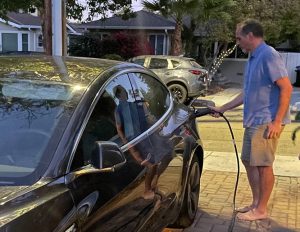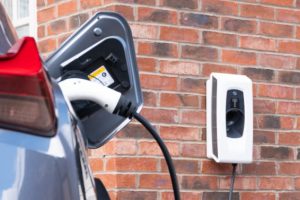
Simulation is based on a model, revealed in March, for charging demand that can be applied to different human populations under different conditions.
In a demonstration, they have now applied it to the whole Western US up to the year 2035.
“We considered the entire Western US region, because California depends heavily on electricity imports from the other Western states,” according to Stanford researcher Siobhan Powell. “EV charging plus all other electricity uses have consequences for the whole Western region given the interconnected nature of our electric grid.”
The team found that predicted growth in electric vehicle ownership could increase peak electricity demand by up to 25% if residential over-night charging dominates.
“Once 50% of cars on the road are powered by electricity in the Western US, of which about half the population lives in California, more than 5.4GW of energy storage would be needed if charging habits follow their current course,” said the University. “That’s the capacity equivalent of five large nuclear power reactors.
To limit the need for additional generation or storage capacity, the researchers suggest moving to day time charging, at work or public charging stations.
“We were able to show that with less home charging and more daytime charging, the Western US would need less generating capacity and storage, and it would not waste as much solar and wind power,” said Powell.
The finding was that charging at work instead of home could reduce the amount of grid storage needed to 4.2GW.
“I think it’s important to point out that the vast majority of the stations we’ll have by 2035 haven’t been built yet, so it’s not about moving current drivers to daytime charging but rather building much more abundant, accessible daytime charging stations going forward,” Powell told Electronics Weekly.
“And it’s not just California and Western states,” said Powell, who has recently returned from research at ETH Zurich. “All states may need to re-think electricity pricing structures as their EV charging needs increase and their grid changes.”
Electricity pricing could have a considerable effect on behaviour, according to Stanford. With a Californian price drop at around 11pm encouraging vehicle owners to time their charging accordingly. However, mainly to its solar capacity, the state has excess electricity during late mornings and early afternoons when vehicles could be charged with less need for additional generation or storage capacity.
Something else to be consider is that commercial and industrial energy pricing strategies could can dissuade employers from installing chargers if use increases, and grid stability is further issue: “At the local level,” said Stanford, “if a third of homes in a neighbourhood have electric vehicles and most of the owners continue to set charging to start at 11pm, or whenever electricity rates drop, the local grid could become unstable.”
The probabilistic model uses hierarchical clustering to group drivers by their charging histories, capturing their behaviours and preferences across different segments or types of charging. It attempts to identify unique charging behaviours observed within each segment.
Western US vehicle charging simulation is described in ‘Charging infrastructure access and operation to reduce the grid impacts of deep electric vehicle adoption‘, published in Nature Energy, and the model is described in the Applied Energy paper Scalable probabilistic estimates of electric vehicle charging given observed driver behavior.
 Electronics Weekly Electronics Design & Components Tech News
Electronics Weekly Electronics Design & Components Tech News




If it is better to use power in the morning, yet prices are lower at night, basic financial theory suggests something is amiss. Could it be that the network cost do not align well with production cost?
Good morning SEPAM
I think that model predicted that the grid would become solar-rich (if not solar-dominated) in the hours either side of noon, and that was when vehicle charging was proposed.
My guess (I did not study the report deeply) was that: when available solar power tops available storage capacity, prices will drop in the same way that they do in the wee hours with coal-dominated power generation.
I could be completely wrong – which is why no one has asked me to model the future, nor anything else….
I wonder how many of our UK politicians will be reading this article? The charging issue does not look good; it will be a bit like the current majority with petrol-powered vehicles being told when and when we cannot go to the local filling station – similar to the days of fuel rationing a few decades ago. We might even be told when and when we cannot go to work (and therefore when we will be able to take ‘weekends’ and holidays) as the availability of at-work charging facilities becomes subject to a rota.
Let alone enough to asses EV charging, I wonder how many UK politicians have got any technical acumen what ever, or statistical acumen, or scientific….
Afternoon Luke Hear 🙂
Financial incentives is supposed to be the answer – that normally works out well without any perverse incentives….